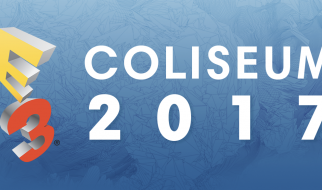First published in Cracking the Enigma, June 2012
It?s no exaggeration to say that Alan Turing was one of the most influential figures of the 20th century. Regarded as the father of computer science and artificial intelligence, he also made ground-breaking contributions to the fields of mathematics, chemistry, and biology. Most famously, during World War II, he played a crucial role in cracking the Nazi?s Enigma code. He was also, it?s argued, a person with Asperger syndrome.
There?s something of a cottage industry in ?outing? historical figures with autism or Asperger syndrome. Candidates include Mozart, Einstein, Isaac Newton, Ludwig Wittgenstein, Thomas Jefferson, Andy Warhol. In many cases, it seems, being brilliant at something and having a reputation for social awkwardness is all that it takes for a ?diagnosis?.
In Turing?s case, there is at least some more concrete evidence to go on. In a 2003 paper, Henry O?Connell and Michael Fitzgerald trawled through Turing?s biography, looking for anecdotes and descriptions of Turing that would support a diagnosis of Asperger syndrome.
The authors used the Gillberg criteria for Asperger syndrome ? a set of six ?symptoms? that must all be present for a diagnosis to be conferred. Turing, they concluded, met all six criteria:
Severe impairment in reciprocal social interaction
- School report described him as ?antisocial?
- Only one friend at school
- Unable to control younger boys at school or manage co-workers
- No attempt to socialise with academic superiors
All-absorbing narrow interest
- Interests in science, mathematics, chemistry, codes and ciphers, nature
Impositions of routines and interests (on self or other)
- Always ate an apple before bed
- House was cluttered with whatever he was interested in at the time
- Always put the cork back in the wine bottle at the end of a meal
- Often worked through the night
- Wrote about his work to people with no scientific background
Nonverbal communication problems
- Stiff gaze in photographs
- Lack of eye contact
- Awkward appearance
- Characteristic response to presentation of new ideas (stabbed fingers and said ?I see, I see?)
Speech and language problems
- High pitched voice
- Misunderstood enrolment form for Home Guard
- Over-analysed colleagues? approaches
Motor clumsiness
- Poor handwriting
- Always got ink on his collar at school
Certainly, a case can be made for Turing meeting each of the six criteria. But some of the observations, such as a high pitched voice, or working late at night don?t really constitute evidence. And can we really say that he had narrow interests when he influenced so many distinct fields? Was having only one friend at school a reflection of social impairment or of having few peers who shared his interests?
The difficulty with making historical diagnoses is that there?s no opportunity to ask further, more targeted questions. What happened if Turing didn?t get his nightly apple? Did it bother him, or did he eat some other fruit? A proper diagnostic interview might uncover further evidence that would provide a more compelling and watertight case for diagnosis.
Even so, Turing?s case highlights the subjective nature of diagnosis. This is particularly true around the edges of the autism spectrum where, as Lorna Wing put it, Asperger syndrome ?shades into eccentric normality?.
Attempts to diagnose Turing arguably reveal more about our current fuzzy concepts of autism than they do about Turing the man. And they make plain why we?re still a long way from understanding the enigma that is autism.
O?Connell, H., & Fitzgerald, M. (2003). Did Alan Turing have Asperger?s syndrome? Irish Journal of Psychological Medicine, 20 (1), 28?31

